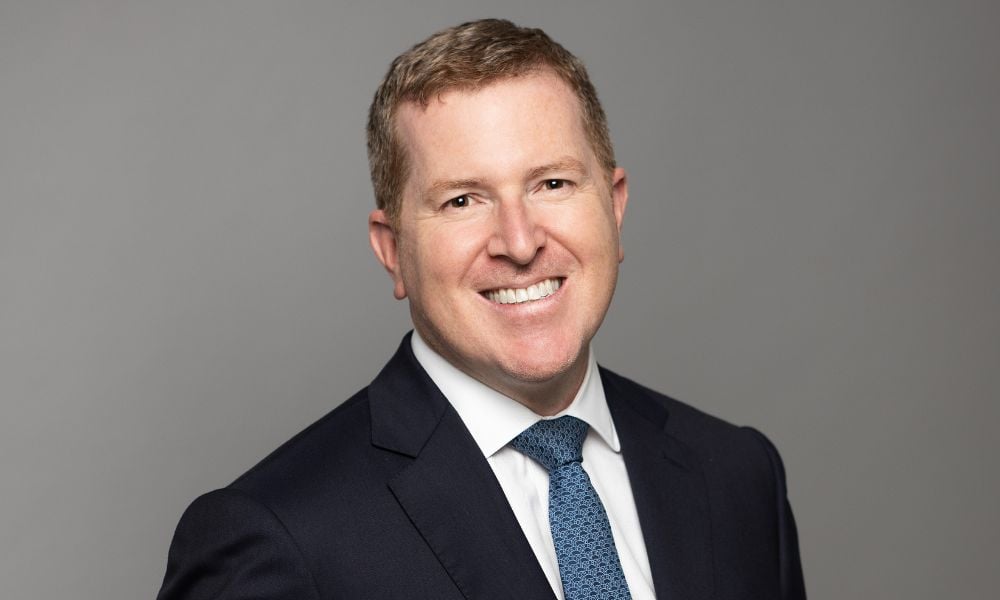CIO sees us at a turning point in the interest rate cycle, highlighting opportunities and the volatility simmering beneath

September is historically the most challenging month on markets. From 1928 to 2023 the S&P 500 has averaged a decline during the month of September. Seasonal investing dictates that September and October are the most volatile months for equities. Lehman Brothers declared bankruptcy in September of 2008, resulting in the great financial crisis. Investors go into September with a healthy sense of worry. This year they’ve come out smiling.
The S&P 500 is up over three per cent on the month. The US has entered its easing cycle in a meaningful way with a 50 basis point cut. Inflation seems to be behind us, at least for now, and while some growth concerns persist about the US and Canadian economies, it appears that both countries are headed for soft landings.
Marc-André Lewis sees in this strong September a sign of the cycle turning. The President and Chief Investment Officer at CI Global Asset Management highlighted that in this changing cycle there could be new leadership taking hold in equity markets. He emphasized that while markets have been strong this month, there are plenty of sources of volatility simmering under the surface.
“We got some form or a reset in August of this year where we saw a lot of volatility, which some people see as the unwinding of the Japanese carry trade and I think was also what happens when markets become a bit too complacent,” Lewis says. “I think this month’s positive market action comes largely from the [US] Federal Reserve. I think there was a relatively thin corridor that Jerome Powell had to navigate to cut rates and be constructive for risk assets. I think he really succeeded.”
Lewis explains that Powell ran the risk of his 50 basis point cut spooking markets, implying a high level of US economic weakness. The positive market response, however, appears to be evidence that investors continue to see the US headed for its goldilocks scenario. Lewis believes that the US and Canadian economies will continue to slow, but neither economy appears headed for a recession now.
A slowdown is not necessarily good news for markets. There should be continued pressure on growth as the 12-18 month transition lags of higher interest rates continue to be felt. The stimulatory effect of these cuts will only begin to be felt a year from now. In the meantime, Lewis expects that unemployment rates will continue to rise — albeit from historic lows — and growth rates will continue to slow.
While slowing growth may prove a headwind for some sectors, Lewis highlights the opportunities present as central banks cut rates. He expects that central bankers will cut deeper than necessary as we get more signs of slowing. That means that even if the bond market has priced in significant cuts, there may yet be room to move for fixed income assets.
In terms of equities, rate-sensitive sectors are an obvious area for some leadership. While real estate sectors do face some significant uncertainties beyond interest rates, the fact of easing should help their outlook, Lewis says. Beyond that, utilities and financials are likely to show some stronger performance in his view. While technology has been a leader for a long period now, and still appears strong, Lewis thinks that the current state of valuations and comps should prove enough of a headwind to at least slow growth there. He argues that broad diversification — an allocation which has underperformed in recent years — may be a stronger position going forward.
While the broad consensus is a goldilocks scenario for the US and Canada, Lewis is quick to remind us of the substantial risks out there on the market. Geopolitics, he says, takes a preeminent role. The US election, the ongoing conflict in the Middle East, and the push by Saudi Arabia to regain share in global oil markets point to myriad sources of instability. Lower global oil prices, for example, may be a headwind for a resource-driven economy like Canada.
“I think the longer markets stay stable, the more instability is created under the surface,” Lewis says. “It makes me nervous when I see markets very steady and calm, you don’t need much to spark a more abrupt movement.”
Lewis says that his team are actively protecting their portfolios against the resurgence of market volatility. At the same time, he argues that asset managers would do well to take a long-term view. There is still a great deal of money sitting in cash and money market instruments, sitting in defensive positions while markets have done very well. Lewis argues that investors should be looking to deploy that capital, though not in the narrow band of US tech stocks that have dominated. He argues for diversification across subsectors and styles, looking for small cap value names that have a lot of valuation ground to make up. He argues that active management, too, can be a serious returns driver.
“Increase diversification and revisit the level of cash. You have to be cognizant of the risks, but don't go too defensive,” Lewis says. “Even if we get volatility, central bankers have given themselves a very substantial buffer to adjust to monetary conditions. As painful as all those rate hikes were, this creates an environment where we can face political turmoil with more ammunition to respond.”



